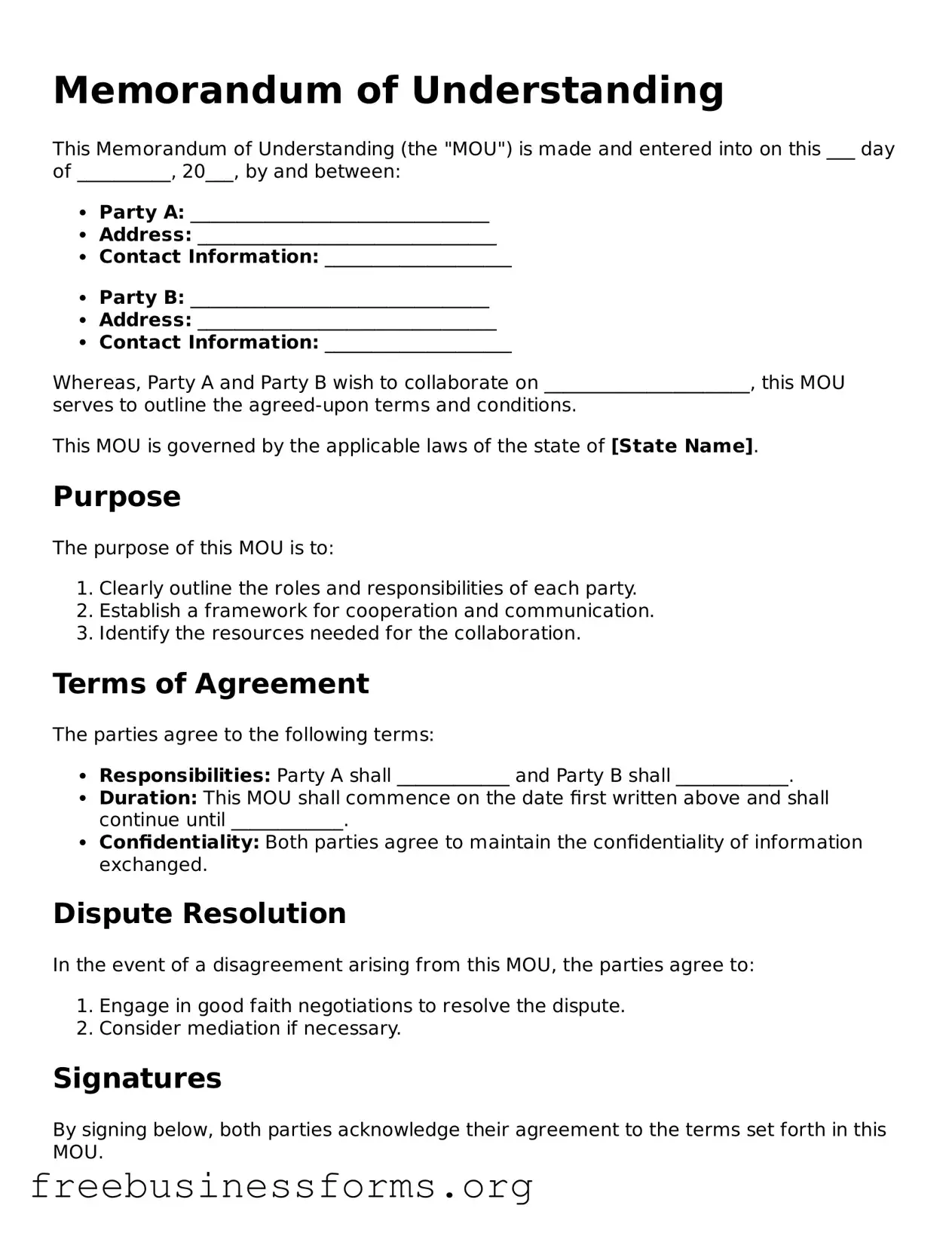Memorandum of Understanding
This Memorandum of Understanding (the "MOU") is made and entered into on this ___ day of __________, 20___, by and between:
- Party A: ________________________________
- Address: ________________________________
- Contact Information: ____________________
- Party B: ________________________________
- Address: ________________________________
- Contact Information: ____________________
Whereas, Party A and Party B wish to collaborate on ______________________, this MOU serves to outline the agreed-upon terms and conditions.
This MOU is governed by the applicable laws of the state of [State Name].
Purpose
The purpose of this MOU is to:
- Clearly outline the roles and responsibilities of each party.
- Establish a framework for cooperation and communication.
- Identify the resources needed for the collaboration.
Terms of Agreement
The parties agree to the following terms:
- Responsibilities: Party A shall ____________ and Party B shall ____________.
- Duration: This MOU shall commence on the date first written above and shall continue until ____________.
- Confidentiality: Both parties agree to maintain the confidentiality of information exchanged.
Dispute Resolution
In the event of a disagreement arising from this MOU, the parties agree to:
- Engage in good faith negotiations to resolve the dispute.
- Consider mediation if necessary.
Signatures
By signing below, both parties acknowledge their agreement to the terms set forth in this MOU.
Party A: ___________________________
Date: ____________________
Party B: ___________________________
Date: ____________________
